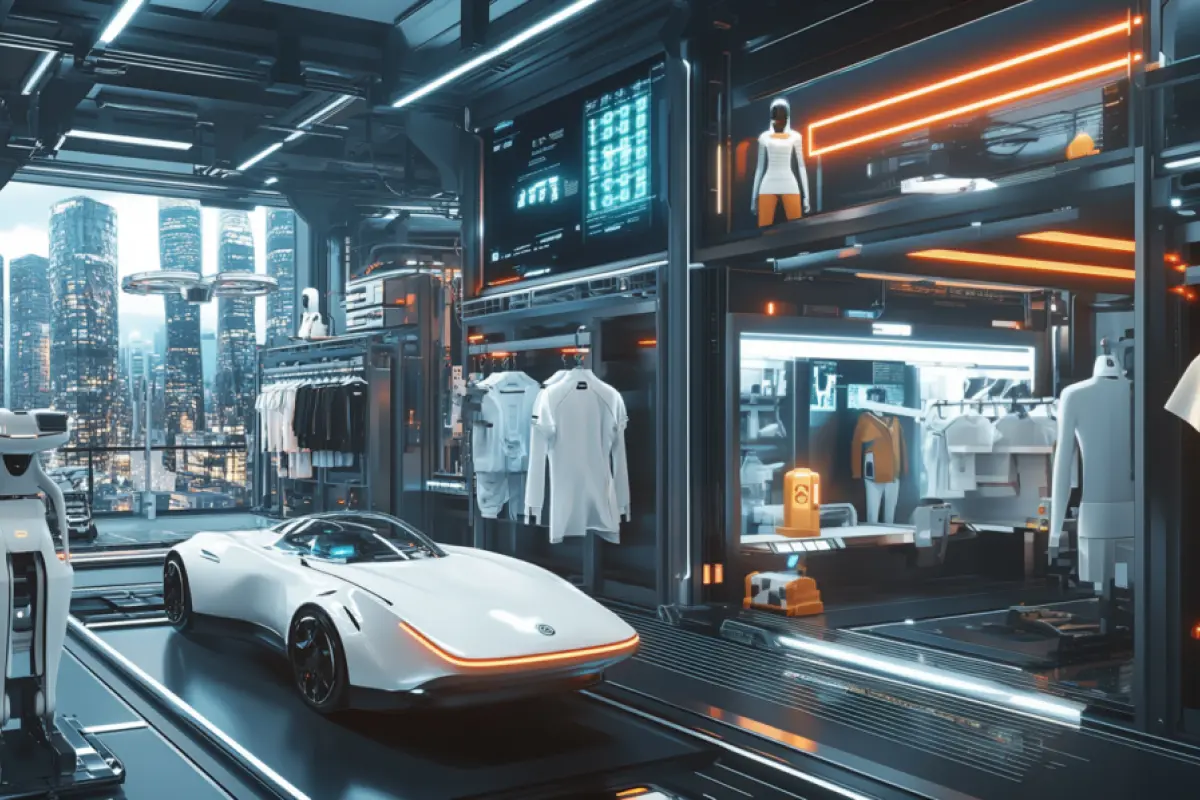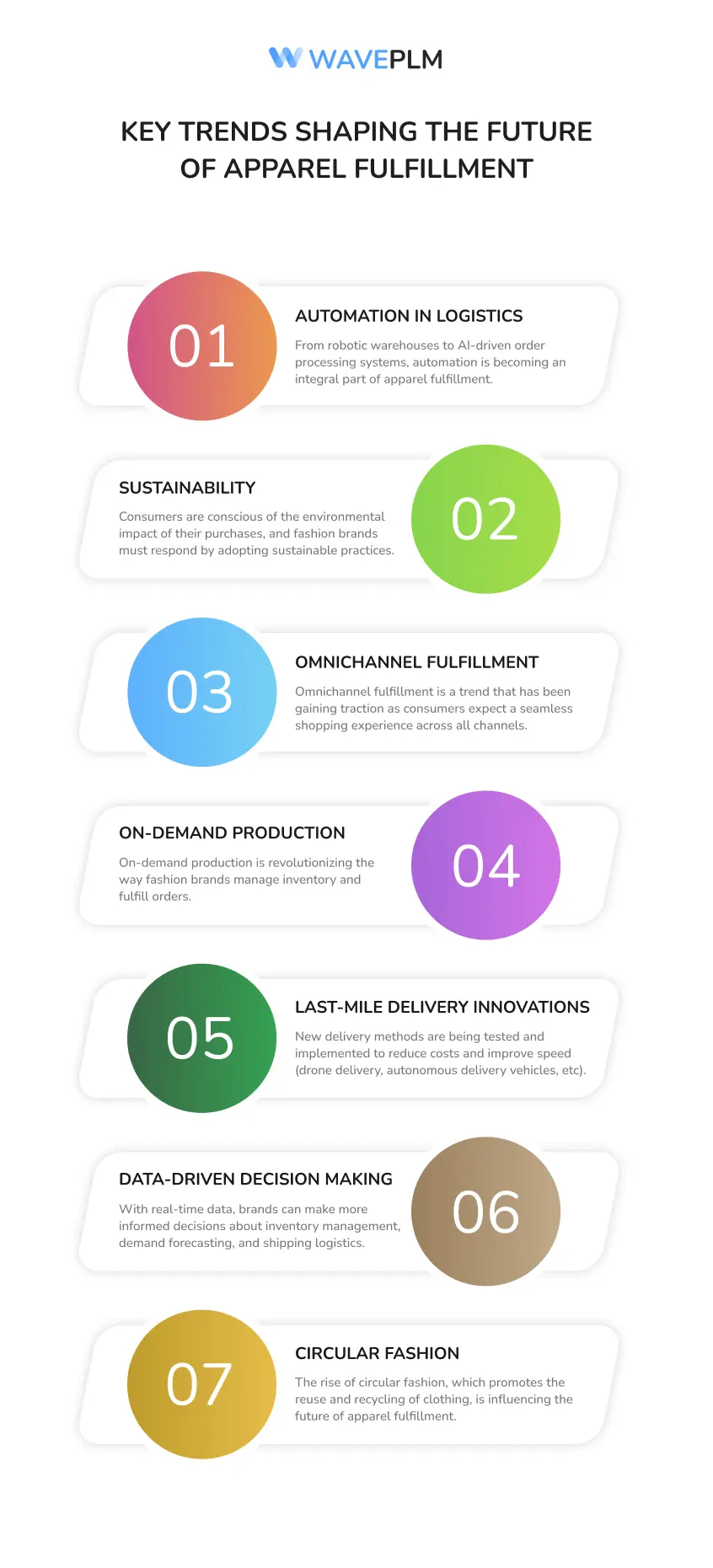
The fashion industry is undergoing a seismic shift. As consumer expectations evolve and technology advances, the way fashion brands handle apparel fulfillment is transforming rapidly. Apparel fulfillment, the process of ensuring clothing items reach customers efficiently, is at the heart of the fashion supply chain. To stay competitive in this fast-paced environment, companies must adapt to new fashion industry trends that are reshaping the landscape.
In this article, we will explore the future of apparel fulfillment and the trends shaping the apparel industry. By diving into the latest logistics technology, evolving consumer demands, and innovative supply chain practices, we’ll uncover the forces driving the fashion industry forward.
Understanding Apparel Fulfillment
Before we dive into the trends, it’s essential to understand what apparel fulfillment entails. Apparel fulfillment refers to the end-to-end process of managing orders from the moment a customer places an order to the point the item arrives at their doorstep. This process includes inventory management, order processing, packaging, shipping, and delivery.
In the digital age, where online shopping dominates, apparel fulfillment has become a critical aspect of business success. Fast and accurate fulfillment can make or break a brand’s reputation. Companies are now focusing on optimizing their supply chains to improve speed, reduce errors, and deliver a seamless customer service experience.
Key Trends Shaping the Future of Apparel Fulfillment
1. Automation in Logistics
Automation is transforming every stage of the fashion supply chain. From robotic warehouses to AI-driven order processing systems, automation is becoming an integral part of apparel fulfillment. The introduction of autonomous robots in warehouses helps brands pick and pack items faster and more accurately, reducing human error and speeding up the entire process.
Automated systems also enhance inventory management by providing real-time updates and alerts for stock levels, helping brands and retailers avoid overstocking or running out of popular items. Moreover, AI-driven software can optimize shipping routes, reduce delivery times, and lower transportation costs, all while improving customer satisfaction.
As automation continues to advance, brands that embrace this technology will gain a competitive edge by improving efficiency and reducing operational costs.
2. Sustainability in Apparel Fulfillment
Sustainability is no longer a trend—it’s a necessity. Consumers are increasingly conscious of the environmental impact of their purchases, and fashion brands must respond by adopting sustainable practices in their supply chains. This includes everything from using eco-friendly packaging materials to reducing carbon emissions in transportation.
One way companies are addressing sustainability in apparel fulfillment is through carbon-neutral shipping. By offsetting their carbon footprint with sustainable practices, such as investing in renewable energy projects, brands can meet the growing demand for eco-conscious products.
Moreover, apparel companies are exploring ways to reduce waste in fulfillment processes. For instance, using recyclable packaging materials and minimizing packaging sizes can help reduce the environmental impact of shipping.
3. Omnichannel Fulfillment
Omnichannel fulfillment is a trend that has been gaining traction as consumers expect a seamless shopping experience across all channels. Whether a customer orders online, through an app, or in-store, they want a consistent experience in how they receive their purchases.
Brands are now integrating their physical stores with their online operations to offer omnichannel fulfillment options like buy online, pick up in-store (BOPIS), or ship from store. This approach not only provides more flexibility for customers but also allows fashion retailers to use their existing store network as mini fulfillment centers, cutting down on shipping times and costs.
In the future, as more brands adopt this omnichannel business model, we can expect to see even faster and more convenient delivery options, such as same-day delivery or 24/7 pickup lockers.
4. On-Demand Production and Customization
On-demand production is revolutionizing the way fashion brands manage inventory and fulfill orders. Rather than producing large quantities of clothing upfront and risking overproduction, brands are increasingly adopting a made-to-order approach. This reduces waste and allows for more personalized products, giving consumers greater control over their purchases.
With the rise of 3D printing and other cutting-edge manufacturing processes, on-demand production is becoming more feasible. Consumers can now customize items, such as choosing specific colours, fabrics, or designs, and receive their personalized products in record time.
This shift towards customization is driving a more efficient and consumer-centric fulfillment model. In the future, apparel fulfillment services will likely prioritize individualized experiences, catering to consumers’ unique preferences and reducing the environmental footprint of mass production.
5. Last-Mile Delivery Innovations
The last mile of delivery — the final leg of the fulfillment journey from the distribution center to the customer’s doorstep — remains one of the most challenging aspects of apparel fulfillment. However, it is also an area ripe for innovation.
New delivery methods are being tested and implemented to reduce costs and improve speed. Drone delivery, for example, has the potential to revolutionize last-mile logistics, offering ultra-fast delivery times in urban areas. Autonomous delivery vehicles are another emerging technology that could streamline the process, reducing the need for human drivers and minimizing delivery errors.
Additionally, many companies are experimenting with micro-fulfillment centers located closer to urban centers, reducing the distance products need to travel and speeding up delivery times. As more companies invest in these technologies, last-mile delivery will become faster, more efficient, and more eco-friendly.
6. Data-Driven Decision Making
Data is playing an increasingly important role in optimizing apparel fulfillment processes. With access to real-time data, brands can make more informed decisions about inventory management, demand forecasting, and shipping logistics.
For instance, predictive analytics can help brands anticipate consumer demand, allowing them to adjust their production and fulfillment strategies accordingly. By analyzing past sales patterns, social media trends, and other data sources, companies can ensure they have the right products in stock at the right time, avoiding costly overproduction or stockouts.
Moreover, data-driven decision-making enhances the customer experience by providing insights into delivery preferences and shopping behaviors. This information allows brands to personalize their fulfillment strategies, improving overall customer satisfaction and loyalty.
7. Circular Fashion and Reverse Logistics
The rise of circular fashion, which promotes the reuse and recycling of clothing, is influencing the future of apparel fulfillment. Brands are increasingly adopting reverse logistics solutions to facilitate the return and recycling of used garments.
In a circular fashion model, customers can return their old clothes to be refurbished, resold, or recycled. This creates a closed-loop system that reduces waste and encourages sustainable consumption. Brands that implement efficient reverse logistics processes can not only reduce their environmental impact but also build stronger relationships with eco-conscious consumers.
As more brands embrace circular fashion, reverse logistics will become an essential component of apparel fulfillment, ensuring that garments have a second life beyond their initial use.
The Role of PLM Software in Apparel Fulfillment
As fashion brands strive to keep pace with the rapidly evolving trends in apparel fulfillment, Product Lifecycle Management (PLM) software is playing a pivotal role in streamlining the entire supply chain. PLM software enables companies to manage the complete lifecycle of a product, from initial design and development to manufacturing, distribution, and fulfillment. By integrating fashion PLM with fulfillment processes, fashion brands can significantly improve efficiency, reduce costs, and accelerate time to market.
Fashion PLM provides real-time visibility into product data, allowing brands to track materials, manage inventory, and collaborate more effectively with suppliers. This level of integration ensures that products are manufactured according to specifications and delivered on time, reducing the likelihood of errors or delays in the fulfillment process.
Moreover, fashion PLM systems can help brands align their sustainability goals with their apparel fulfillment strategies. By providing insights into sourcing materials and production processes, fashion PLM enables companies to make informed decisions about sustainable practices, further enhancing their ability to meet the growing demand for eco-friendly products.
In the future, we can expect apparel PLM to become an even more critical component of apparel fulfillment as fashion companies leverage this technology to create more transparent, efficient, and customer-centric supply chains.
The Future is Now: Embracing the Change
The future of apparel fulfillment is bright, driven by a combination of technological advancements, changing consumer expectations, and a growing focus on sustainability. Fashion brands that embrace these trends will be well-positioned to thrive in an increasingly competitive market.
From automation and omnichannel fulfillment to sustainability and last-mile delivery innovations, the future of apparel fulfillment is all about speed, efficiency, and consumer satisfaction. By staying ahead of these trends, fashion companies can streamline their supply chains, reduce costs, and deliver a seamless shopping experience that keeps customers coming back for more.
As the fashion industry continues to evolve, apparel fulfillment will remain at the forefront of innovation, shaping the future of how consumers interact with brands and receive their products.
By investing in logistics technology and adopting sustainable practices, companies can build a more resilient, flexible, and customer-centric supply chain — ensuring they stay ahead of the curve in the fast-changing world of fashion.






Leave a Reply